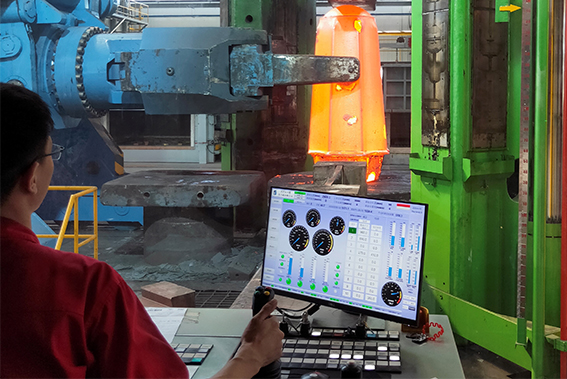The Connection of Forging and Pressing, and Cold Forging
(2023年)https://www.walkson.com/the-connection-of-forging-and-pressing-and-cold-forging.html
Ⅰ. What is forging
Forging is a processing method that uses a forging machine to apply pressure to a metal blank to produce plastic deformation to obtain a forging with a certain mechanical performance, a certain shape and size. Forging and stamping belong to the nature of plastic processing, collectively referred to as forging and pressing. Forging is a commonly used forming method in mechanical manufacturing. Through forging, the as-cast looseness and welding holes of the metal can be eliminated, and the mechanical properties of forgings are generally better than those of castings of the same material.
Ⅱ. The connection between forging and pressing, and cold forging
Forging can be divided into cold forging and hot forging according to the temperature of the blank during processing. Types of cold forgings are generally processed at room temperature, and hot and cold forging process steps are processed at temperatures higher than the recrystallization temperature of the blank metal. Sometimes, the forging performed when the temperature does not exceed the recrystallization temperature is called warm forging. However, this division is not completely uniform in production.
According to the forming method, forging can be divided into free forging, die forging, cold heading, radial forging, extrusion, forming rolling, roll forging, rolling and so on. The deformation of the billet under pressure is basically not restricted by the outside, it is called free forging, also called open forging. The deformation of the billet in other forging methods is restricted by the die, which is called closed mode forging.
There is a relative rotational movement between the forming tools such as forming rolling, roll forging, and rolling and the blank, which pressurize and shape the blank point by point and gradually, so it is also called rotary forging. Forging materials are mainly carbon steel and alloy steel with various compositions, followed by aluminum, magnesium, copper, titanium, etc. and their alloys. The original state of the material includes bar stock, ingot, metal powder and liquid metal. Liquid metal die forging is a forming method between die-casting and die forging, and is especially suitable for complex thin-walled parts that are difficult to form by general die forging. Different forging methods have different processes.
In the forging process, the entire billet undergoes significant plastic deformation and has a relatively large amount of plastic flow. In the stamping process, the billet is formed mainly by changing the spatial position of the area of each part, and there is no large distance plastic flow inside. Forging and pressing is mainly used to process metal parts, and can also be used to process certain non-metals, such as engineering plastics, rubber, ceramic blanks, brick blanks, and the forming of composite materials.
Forging and pressing and rolling and drawing in the metallurgical industry are all plastic processing. But forging and pressing is mainly used for the production of metal parts, while rolling and drawing are mainly used for the production of plates, strips, pipes, profiles and wires.
The appearance of cold forging precedes hot forging. Early copper, gold, silver flakes and coins were all cold forged. The application of cold forging in mechanical manufacturing has been popularized in the 20th century. Cold heading, cold extrusion, radial forging, and swing forging have been developed successively, gradually forming an efficient forging process that can produce precision parts without cutting.
WALKSON values safety, quality and delivery, while cost is the last thing to consider for us. We always provide the best products and services and always be your reliable partner.
We can also offer kinds of undercarriage parts for sale, if you have needs, please contact us.

- このできごとのURL:


コメント